Criminology > Summary > Criminology Final notes latest with summary (100% well enlightened) (All)
Criminology Final notes latest with summary (100% well enlightened)
Document Content and Description Below
Criminology Final notes Contents Ch.10 Violent crime Ch. 11 Property Crime Ch. 12 White-collar and corporate crime Ch. 13 Public Order Crimes Violent Crimes Ch.10 Violent crime Homicide: ki... lling of one human being by another Justifiable homicide: homicides committed by law enforcement, soldiers, or homeowner in course of carrying out duties Criminal homicide: unlawful killings, without justification (three categories) • Murder: intentional killing of another person with malice aforethought o Malice: “evil mind” “abandoned and malignant heart” o First degree murder: premeditated, deliberate, intentional killing o Second degree murder: killing without premeditation o Felony murder: no intention to kill, intention to commit other crime but there is a murder during other crime. (everyone associated) • Manslaughter: unlawful killing of another person without malice. May be voluntary of involuntary o Voluntary: killing committed intentionally but without malice Ex. Making irrational decision in argument (heat of moment) Defendant’s awareness of the unlawfulness was dulled by shock, fright, consternation, or intoxication o Involuntary: person has caused death of another unintentionally but recklessly by consciously disregarding a substantial and unjustifiable risk that endangers another persons life Ex. Negligent homicide (not fixing fire codes) • The Extent of Homicide: social science study o Homicide rates: have been decreasing • Nature of Homicide o Victim Precipitation (Wolfgang): how a victim's interaction with an offender may contribute to the crime being committed. (Felson & Messner): more cases of women killing their husbands opposed to husbands killing wives • Males more violent in killing methods (Silverman & Kennedy): • Gender relationship • Age • Means of commission of the act • Location vary with relational distance ranging from closest to relatives to total strangers (Zahn & Sagi): distinguished homicide categories • Those within family • Those among friends • Stranger homicides associated with felonies • Stranger homicides not associated with felonies o Stranger Homicides: killer and victim had no previous contact (Reidel): assumes average rates are understated 14% o Relatives & Acquaintances: killer and victim have intimate relationship Significant percentage of all homicides: 44% • Most occur after long-term abuse by husband • Children more like to be killed by relative o Young & old perpetrators: low homicide rates o Homicide without apparent motive: 25% of all homicides No history of alcohol abuse Recent release from prison Claims of amnesia for crime Denial of crime Exhibit psychotic behavior after crime o Serial Murder: killing several victims over period of time o Mass murder: killing of multiple victims in on event or in very quick succession o Sociopaths (Levin & Fox): persons who lack internal controls, disregard common values, and have an intense desire to dominate others o Gang Murder: differ both quantitatively and qualitatively from nongang homicides. Differ with respects to ethnicity, age, number of participants, relationships • Cross-National Comparison of the Homicide rates o US rates lowering o More developed countries have less homicides than less developed o Moderate association between inequality of income and rate of homicide Assault: attack on another person that is made with apparent ability to inflict injury and that is intended to frighten or to cause physical harm • Battery: an attack the results in touching or striking the victim • Simple assault: inflicts little or no physical harm, felonious assault • Aggravated assault: inflicts serious harm on the victim or uses a deadly weapon • 6 stages of confrontational situation leading to assault: 1. One person insults another 2. Insulted person notices insult 3. Insulted person response: (fight or flight) 4. Insulter: fight or flight 5. Fight 6. Winner flees or waits for consequence Family-related crimes: • Spouse abuse: abuse of spouse o Extent of spouse abuse: (Straus & Gelles) 1/6 couples experience physical assault during the year ½ domestic assault not reported • most common reason is matter is private • reported assaults to prevent future assault • 2/3 of assaults are simple assaults o Nature of spouse abuse: interpersonal violence is learned and transmitted from one generation to another • Child Abuse: spouse abuse closely related to child abuse: correlation between men beating women and men beating children o Extent of child abuse: 3.7 million reports of suspected child abuse or neglect o Nature of child abuse: high proportion of abusers suffered from alcoholism, drug abuse, mental retardation, poor attachment, low self esteem, or sadistic psychopathy • Abuse of elderly: o Domestic elderly abuse o Institutional elderly abuse o Self-neglect or self-abuse Rape and Sexual Assult: • Rape: act of forced intercourse without consent o Stranger rape: victim has had little or no prior contact with offender o Predatory rape: offender uses deception or force, intends and plans to rape his victim by pretending to engage in legitimate dating behavior o Date rape: legitamte dating situation turned bad, when force is eventually used to gain sex from woman who is unwilling • Psychological factors: suffering from mental illness o Psychotic, sociopathic, sadistic, don’t feel masculine • Sociocultural factors: rape is culturally related to societal norms that approve of aggression • Rape and legal system: (Hale, Pleas of the Crown)- required stringent proof o Difficulties of prosecution: needs collaborating evidence- semen, torn clothes, bruises, or eyewitness o Legislative changes: feminist movement has impact on laws (Schwartz & Clear)- rape should be a general assault crime • Community Response: 1970- Bay Area Women Against Rape- emergency hotline; late 1970s federal and state funding across country Kidnapping: abduction and detention by force or fraud and transport beyond the authority of the place where the crime was committed • Crimping or shanghaiing: involuntary service aboard ships and abduction of women for purposes of prostitution abroad Robbery: taking of property from a victim by force and violence or by the threat of violence • Robbery is second degree felony (Model Penal Code) • Characteristics for robbers o Professional o Opportunistic o Addict o Alcoholic • Consequences: losing money or property; psychological and physical trauma Organized crime: started between 1875 and 1920; exploded during prohibition(18th amendment) • Racketeer Influenced and Corrupt Organizations Act (1970): attacks racketeering activities by prohibiting the investment of any funds derived from racketeering in any enterprise that is engaged in interstate commerce • Federal Witness Protection Program (1970): witness protection Emerging Problems: terrorism, hate-crim, gov’t militias, mass shooting • Terrorism: resort of violence or a threat of violence on the part of a group seeking to accomplish a purpose against the opposition of constituted authority o Extent: terrorism is increasing • Hate crimes: involving racial, sexual or prejudice acts • Militias: military force raised from civil population; could threaten American constitution • School Violence: violence has decreased over time; recent school shooting have gained media attention Violence & Gun control: after shootings, 80% of citizens want stricter policies • Extent of gun-related offenses: still more prevalent than any other western nation o 60x more than England and Wales • Youth and guns: most youth that had guns had friends with guns • Controlling handgun use: ~20,000 laws regulate firearms o Brady Law- 5 day waiting period and background check • Gun-control debate: NRA vs. advocates for control (12 law enforcement groups & ¾ of American public) [Show More]
Last updated: 1 year ago
Preview 1 out of 23 pages

Buy this document to get the full access instantly
Instant Download Access after purchase
Add to cartInstant download
We Accept:

Reviews( 0 )
$5.00
Document information
Connected school, study & course
About the document
Uploaded On
Aug 21, 2022
Number of pages
23
Written in
Additional information
This document has been written for:
Uploaded
Aug 21, 2022
Downloads
0
Views
79

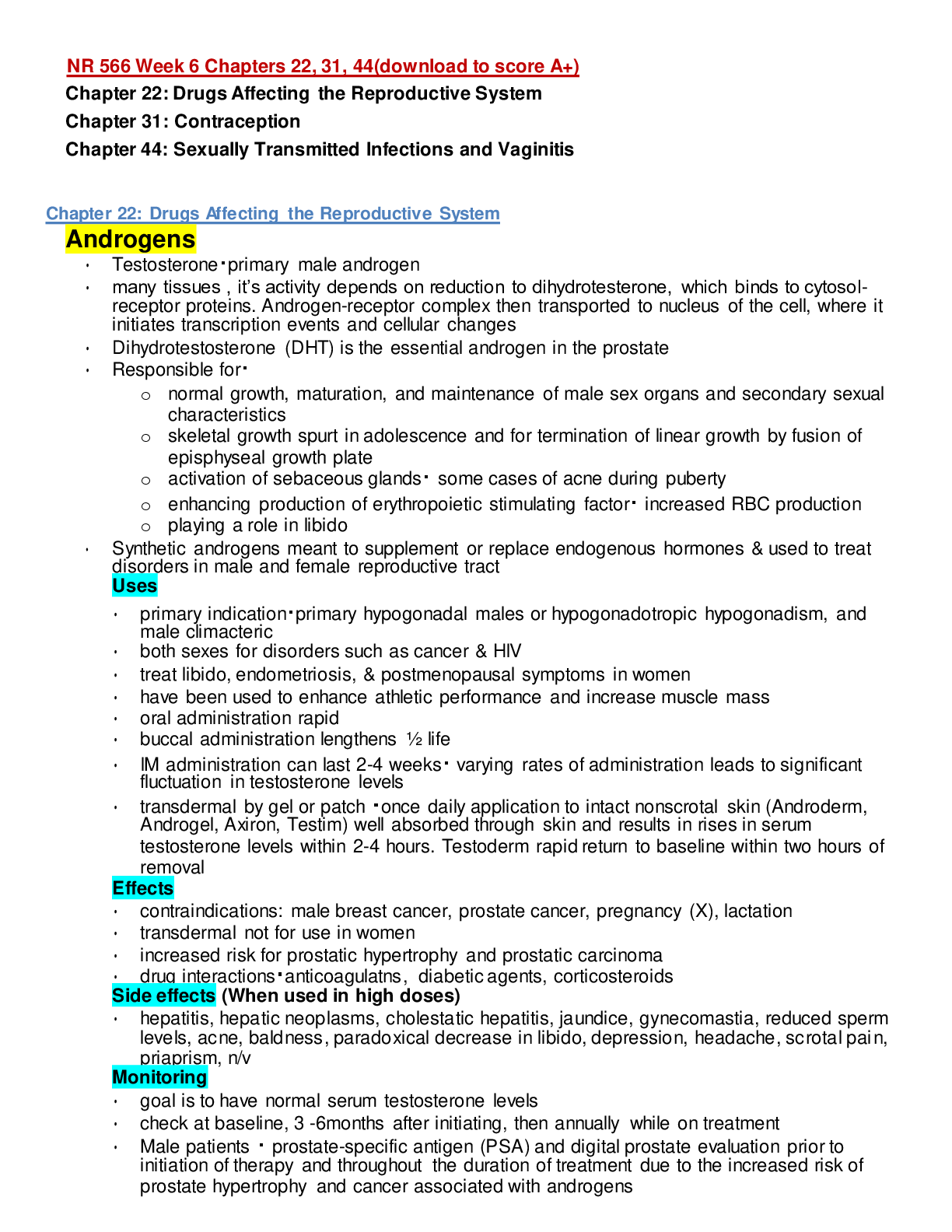
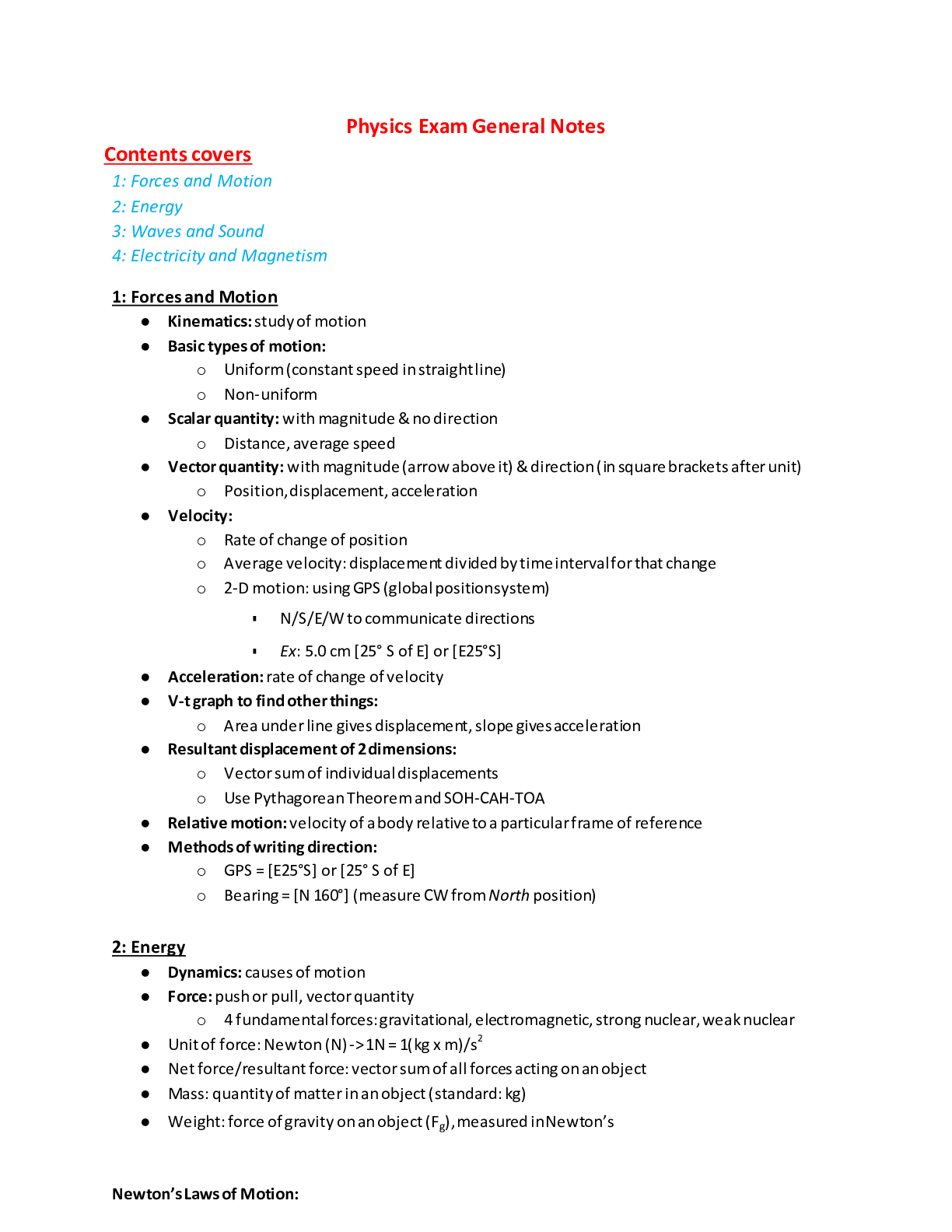
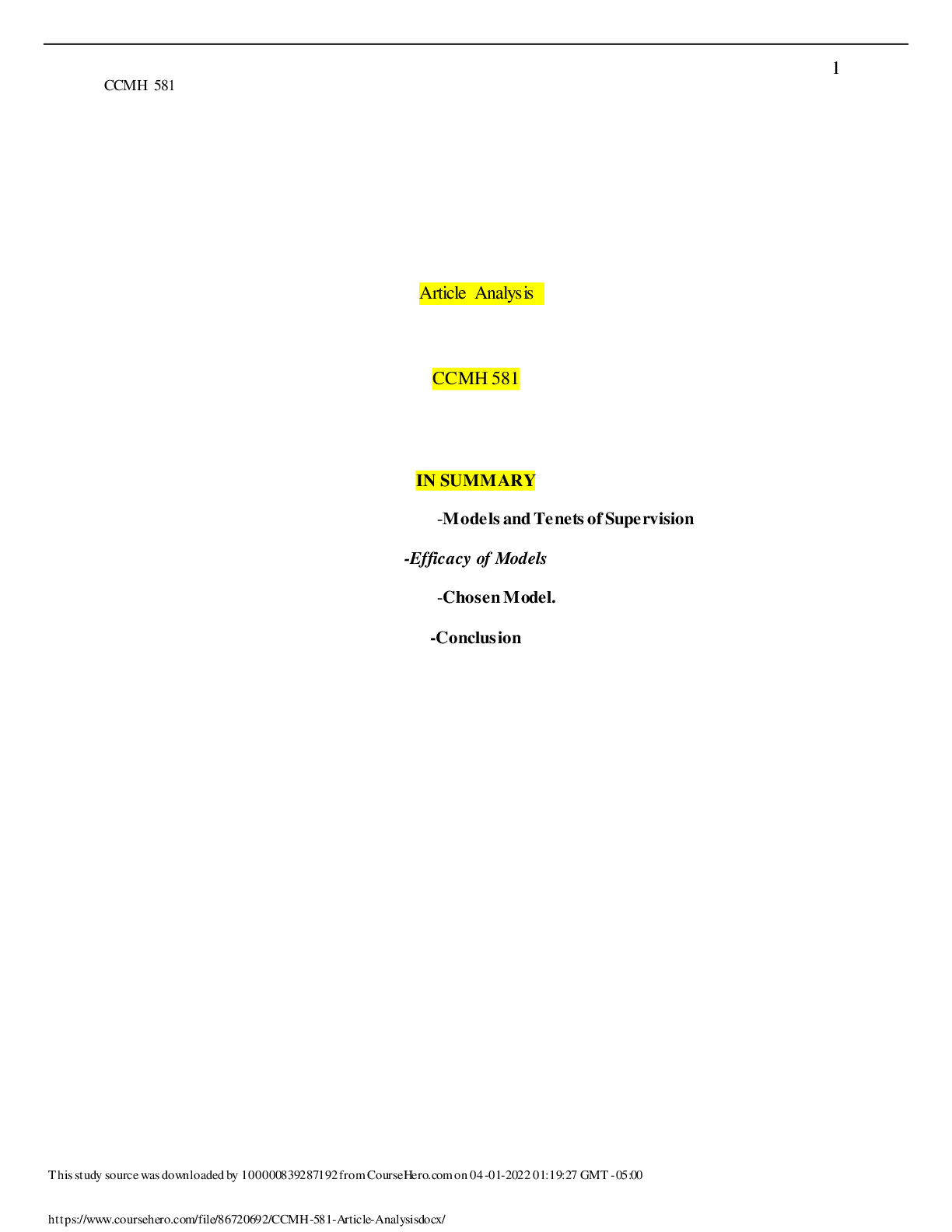
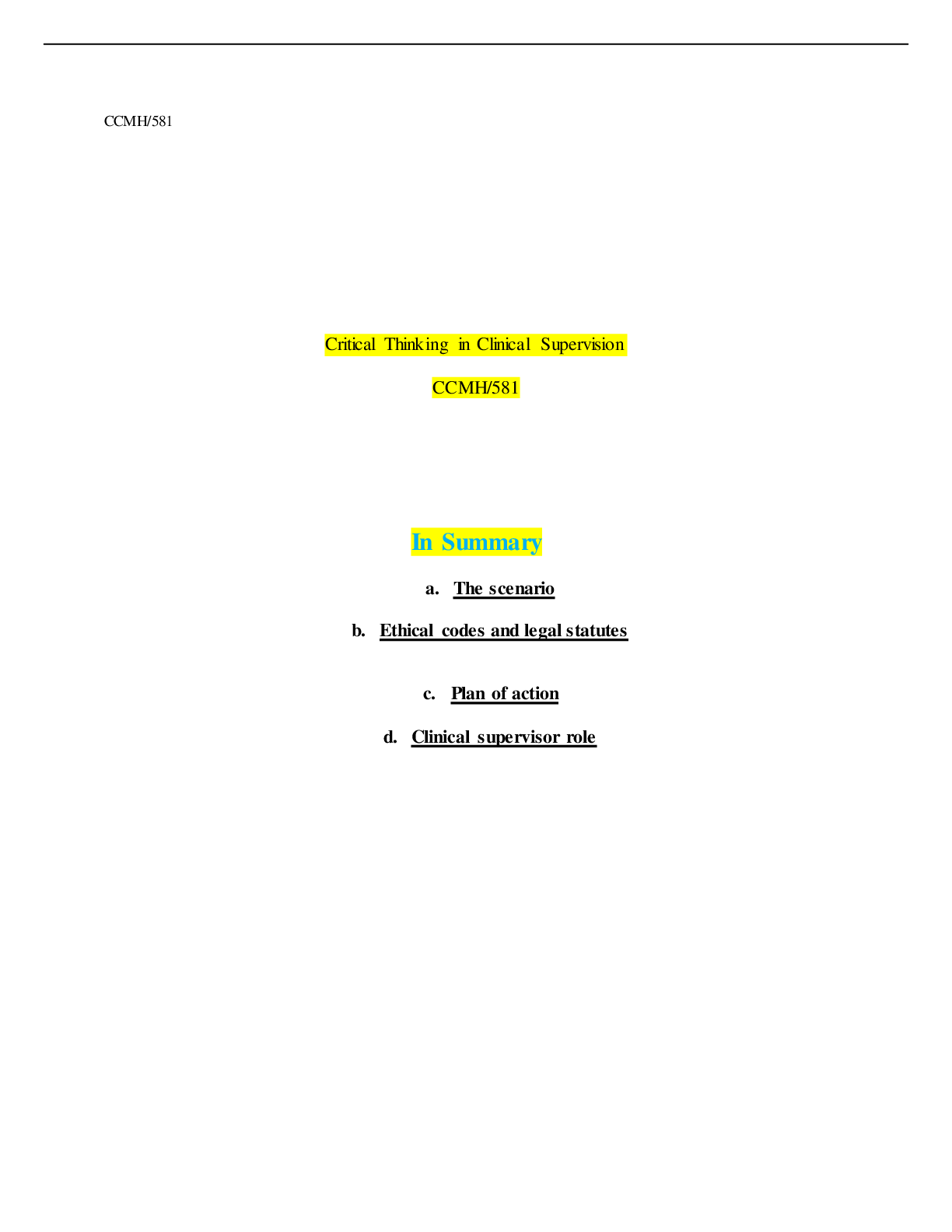
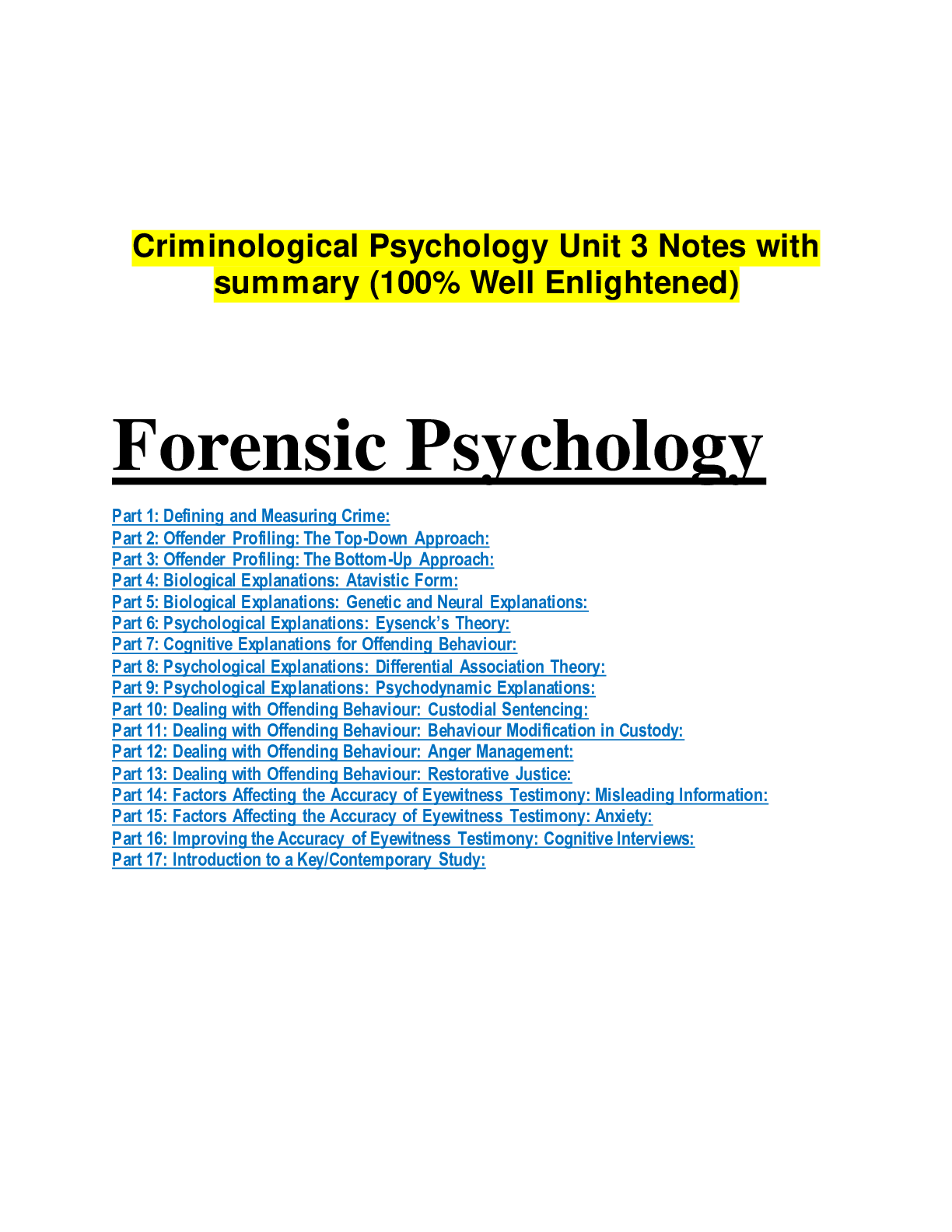
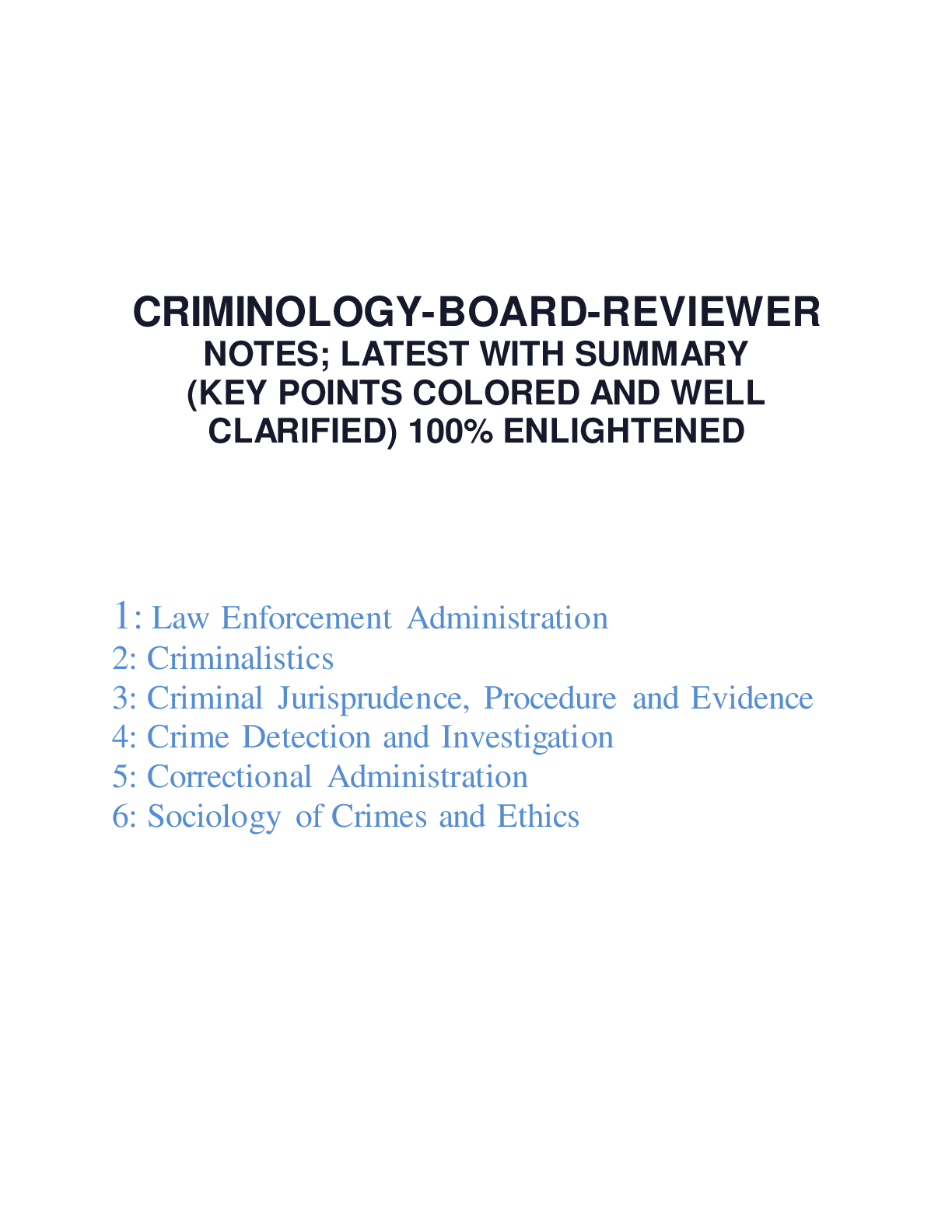

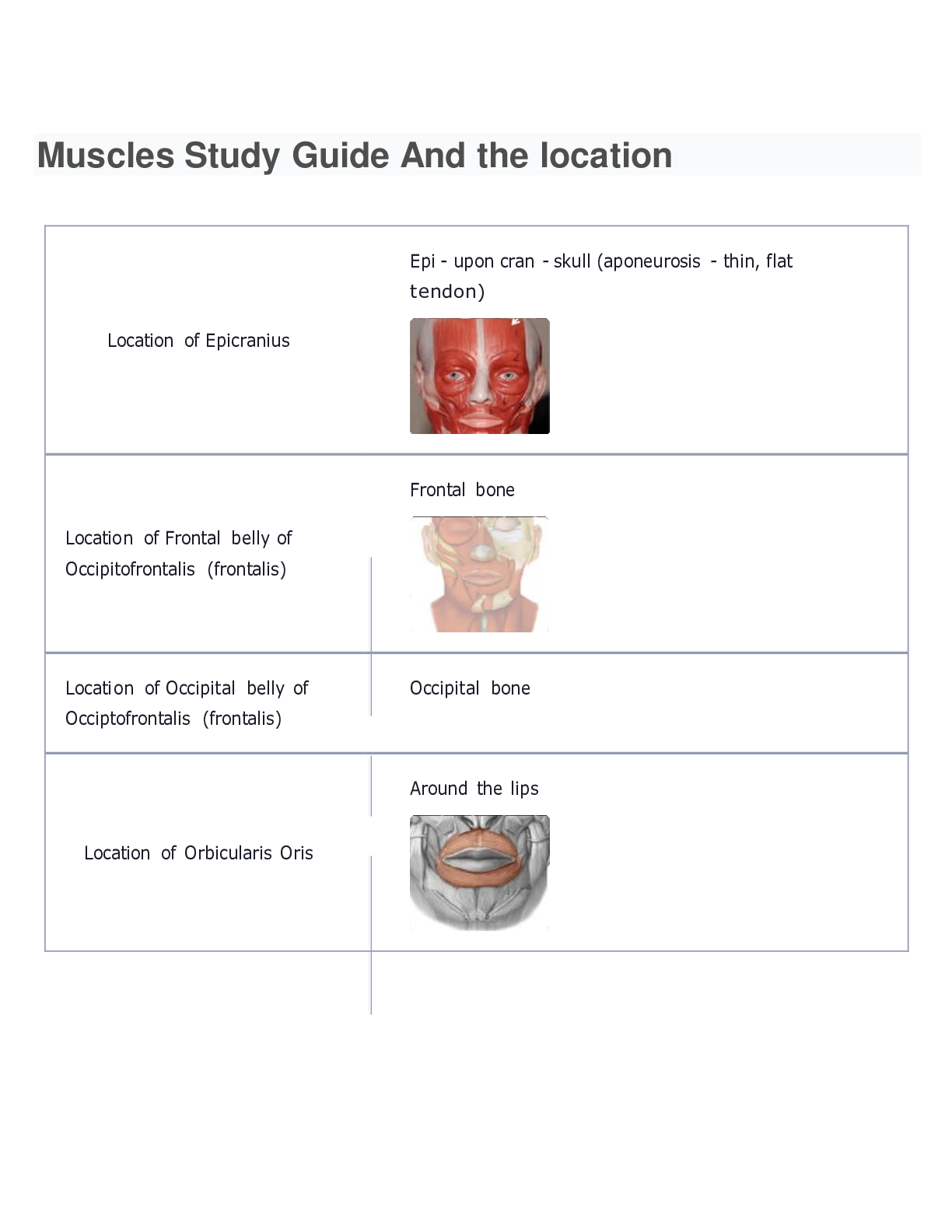





.png)






